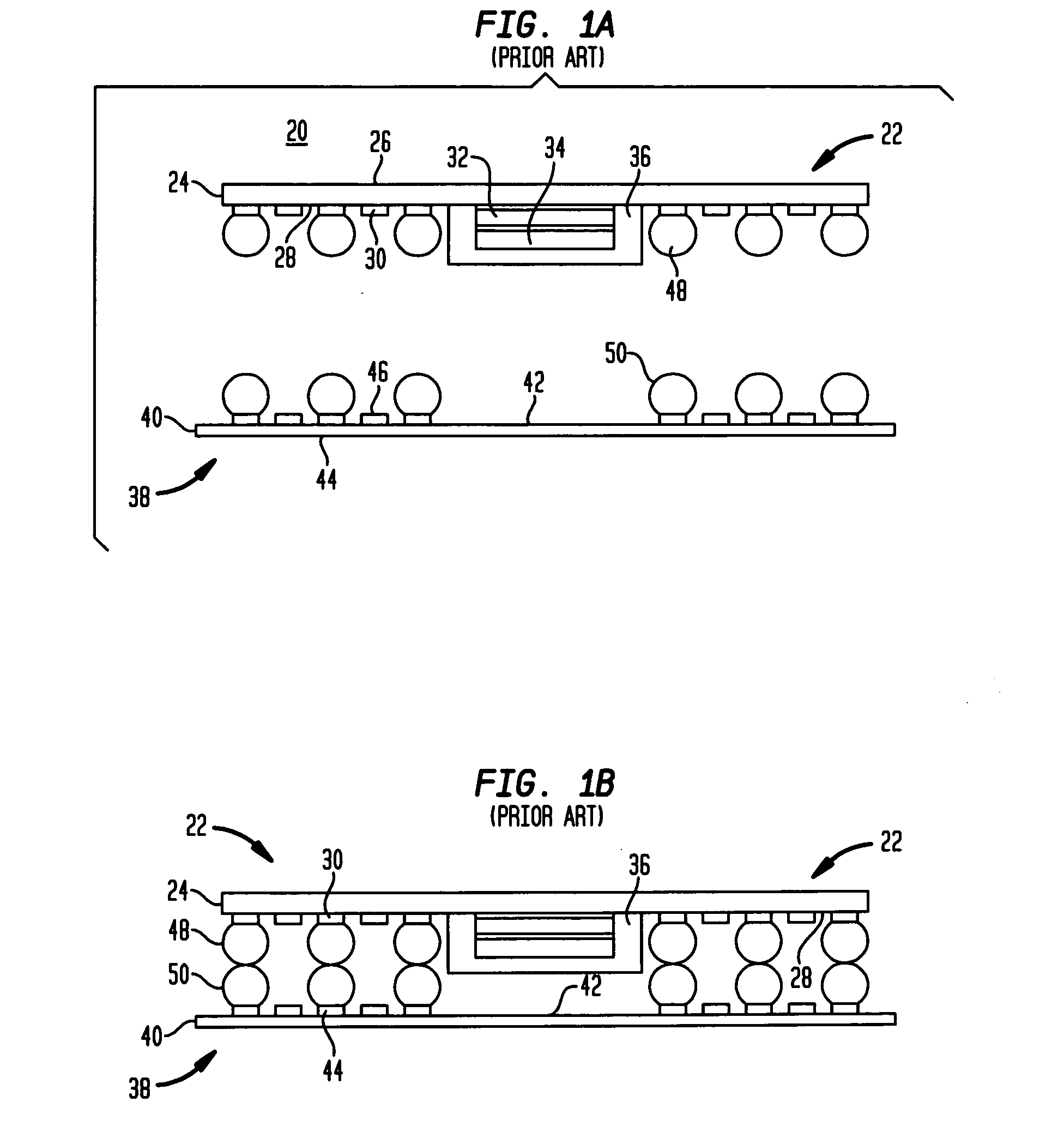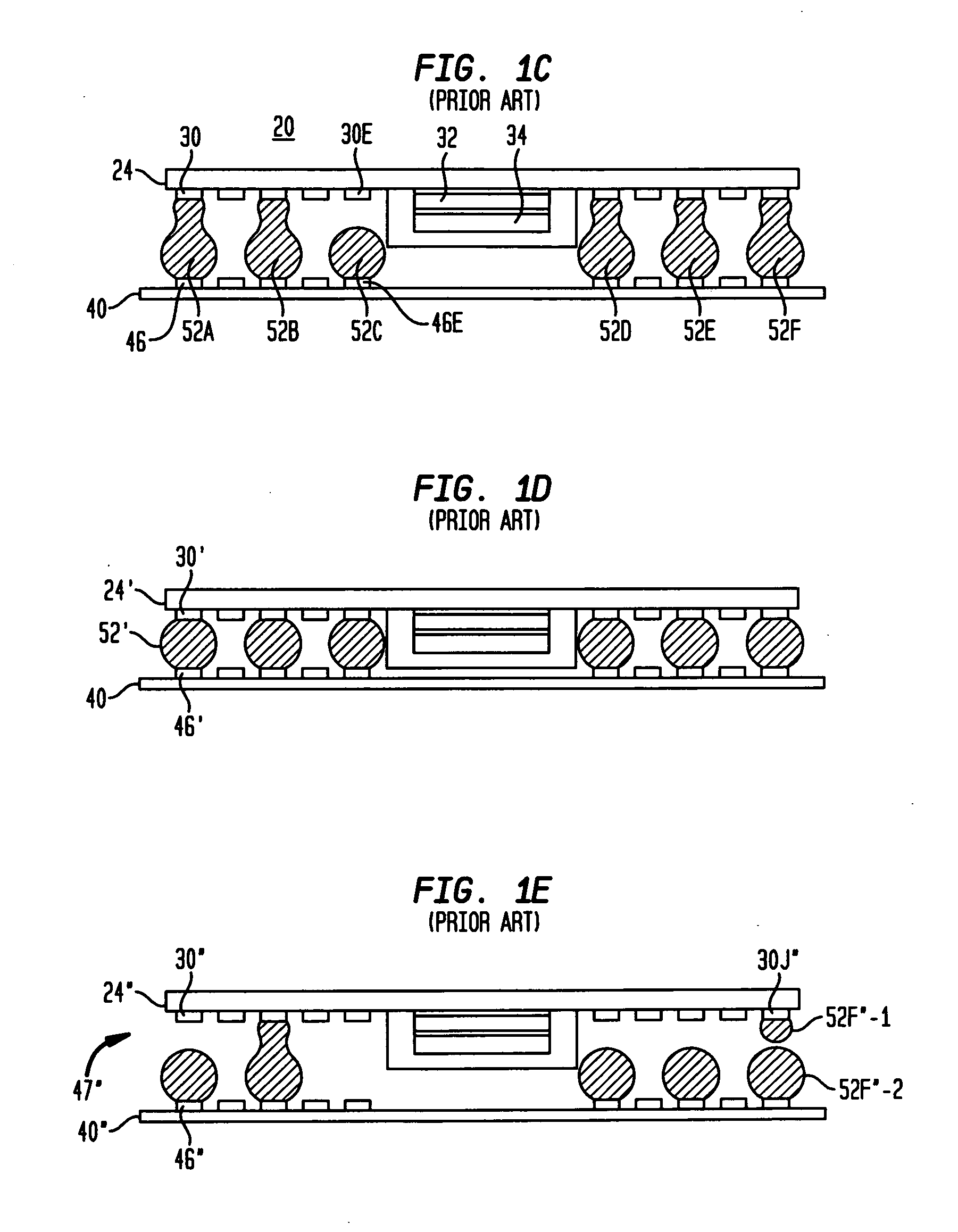Microelectronic assemblies having very fine pitch stacking
a microelectronic and assembly technology, applied in the direction of semiconductor devices, semiconductor/solid-state device details, electrical apparatus, etc., can solve the problems of imposing stress on assemblies including packages, terminals moving relative to the contact, and imposing stress on solders, etc., to achieve the effect of facilitating testing
- Summary
- Abstract
- Description
- Claims
- Application Information
AI Technical Summary
Benefits of technology
Problems solved by technology
Method used
Image
Examples
Embodiment Construction
[0049]FIGS. 1A-1C show a conventional method of making a stackable assembly including a first microelectronic package 22 having a dielectric substrate 24 with a first surface 26 and a second surface 28. The first microelectronic package 22 includes conductive pads 30 accessible at the second surface 28 of the substrate 24. The first microelectronic package 22 also includes a first microelectronic element 32, such as a semiconductor chip, attached to the second surface 28 of the substrate 24. The microelectronic package 22 also includes a second microelectronic element 34 overlying the first microelectronic element 32. An encapsulating material 36 covers the first and second microelectronic elements 32, 34.
[0050] Referring to FIG. 1A, the microelectronic assembly also includes a second microelectronic element 38 including a substrate 40 having a first surface 42 and a second surface 44. The first surface 42 of the substrate 40 includes contacts 46 accessible at the first surface. Du...
PUM
 Login to View More
Login to View More Abstract
Description
Claims
Application Information
 Login to View More
Login to View More - R&D
- Intellectual Property
- Life Sciences
- Materials
- Tech Scout
- Unparalleled Data Quality
- Higher Quality Content
- 60% Fewer Hallucinations
Browse by: Latest US Patents, China's latest patents, Technical Efficacy Thesaurus, Application Domain, Technology Topic, Popular Technical Reports.
© 2025 PatSnap. All rights reserved.Legal|Privacy policy|Modern Slavery Act Transparency Statement|Sitemap|About US| Contact US: help@patsnap.com



